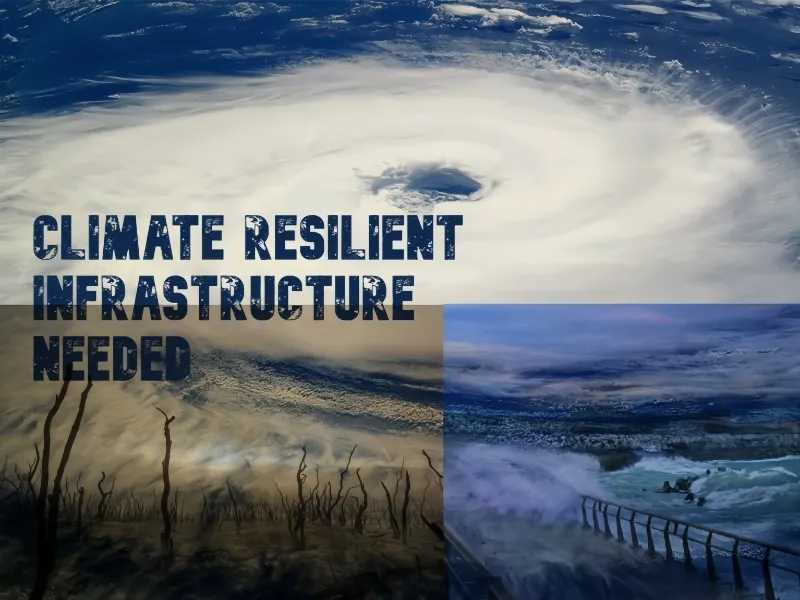- Climate-resilient infrastructure refers to infrastructure that can reliably and effectively withstand expected and unexpected climate shocks and stresses.
- Ensuring the resilience of infrastructure to climate change will help protect lives and reduce direct losses from extreme weather events.
In the context of growing climate challenges, building climate-resilient infrastructure is critical to protecting communities and economies from extreme weather events. This proactive approach to infrastructure development prioritizes resilience, ensuring that vital systems can withstand and recover from increasingly frequent and severe climate-related disasters.
What is climate-resilient infrastructure
Climate-resilient infrastructure refers to sustainability, that is, infrastructure that can reliably and effectively withstand expected and unexpected climate shocks and stresses over its lifetime with minimal damage and without failure.
Ensuring the resilience of infrastructure to climate change will help protect lives and livelihoods, reduce direct losses from extreme weather events, and play a key role in meeting the mitigation goals of the Paris Agreement, as well as national development aspirations. UNDP is working with a range of partners to use ecosystem-based adaptation approaches to support countries in building climate-resilient rural and urban infrastructure and advancing resilient infrastructure planning. Under the Global Adaptation Portfolio, this work includes everything from flood and coastal protection measures to early warning systems to support enhanced planning and decision-making.
Also read: IETF email service to experience a planned outage for infrastructure upgrade
Also read: Silicone Connect expands Congo’s digital infrastructure network
Challenges in building climate-resilient infrastructure
Developing countries, especially least developed countries and small island developing States, are particularly vulnerable to extreme weather events, just as they are to all-natural disasters. High financing costs and other challenges also hinder their ability to build high-quality infrastructure and achieve development goals.
The case for climate-resilient infrastructure
The heat wave that swept the United States in June put a huge strain on the power grid, surging demand for air conditioners and causing rolling blackouts and blackouts. Heavy rains in Midwestern states have caused severe flooding, washing out a bridge and nearly destroying a dam in Minnesota. Earlier this month, rising temperatures caused a major road between Idaho and Wyoming to collapse when runoff from melting mountain snow triggered a landslide. A week after Hurricane Beryl made landfall in Texas, more than 100,000 residents in the Houston area are still without power in dangerously hot conditions.
Climate change is making weather harder to predict and creating new risks in places that have never been faced before. As hurricanes, floods, extreme heat, and wildfires intensify, most infrastructure will need to be retrofitted or redesigned and built to adapt to future climate change.
Climate-resilient infrastructure is infrastructure that takes into account the impacts of climate change in its planning, design, construction and operation. Resilient infrastructure must not only withstand climate impacts, but also be able to recover quickly after disruptions. As one vice president at ARUP, a global sustainability company, says, “You need to be prepared to be surprised.”

